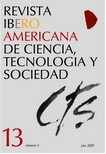Measuring the Impact of Science, Technology, and Innovation in Cuba
Analysis of an Experience
DOI:
https://doi.org/10.52712/issn.1850-0013-852Keywords:
economy, cuban society, innovation, integral development, R&D social impactAbstract
This paper focuses on Cuba’s experience in developing the management of the impact of science, technology and innovation, factors of first order when it comes to addressing major imbalances and structural problems of the Cuban economy today. This article distinguishes seven main destinations of the impact, divided into four main impact sources (three potential and real). It explains the work developed in the country under the leadership of the Ministry of Science, Technology and Innovation (CITMA), based on the Nomenclature of Goods and Services with added value by the S+T+i, mainly carried out in the economic dimension. It also raises ideas on how to address the social dimension of the impact on the Nomenclature. That is the reason why this article suggests the reorientation of the measurement of impact towards productive goods, services and social services, in order to allow higher standards of living in relation to food, housing, drinking water, etc., together with the constant elevation of the levels already achieved in education, health and general culture.
Downloads
References
ALBORNOZ, M. et al. (1999): Impacto social de la ciencia y la tecnología: conceptualización y estrategias para su medición, documento de trabajo, Universidad Nacional de Quilmes.
CASTRO DÍAZ-BALART, F. y PÉREZ ROJAS, H. (2000): "Conocimiento y tecnología. Apuntes para una agenda del sur", Ciencia, Innovación y desarrollo, nº 5, vol. 2.
ESTEBÁNEZ, M. E. (1998): "La medición del impacto de la ciencia y la tecnología en el desarrollo social", documento presentado al Segundo Taller de Indicadores de Impacto Social de la Ciencia y la Tecnología, RICYT, La Cumbre.
ESTEBÁNEZ, M. E. y KORSUNSKY, L. (2003): "Medición de actividades de vinculación y transferencia de conocimientos científicos y tecnológicos", en El Estado de la Ciencia, Principales Indicadores de Ciencia y Tecnología Iberoamericanos /Interamericanos, Buenos Aires, RICYT.
FERNÁNDEZ POLCUCH, E. (1999): "La medición del impacto social de la ciencia y la tecnología, documento presentado en el IV Taller Iberoamericano/Interamericano de Indicadores de Ciencia y Tecnología, RICYT, México.
GONZÁLEZ GARCÍA, M., LÓPEZ CEREZO, J. A. y LUJÁN LÓPEZ, J. L. (1998): Los estudios sobre ciencia, tecnología y sociedad, OIE, Cuba, Curso Nacional para Administradores de Ciencia y Tecnología.
LÓPEZ CEREZO, J. A. y LUJÁN, J. L. (2002): "Observaciones sobre los indicadores de impacto social", Indicadores de Ciencia y Tecnología en Iberoamérica Agenda 2002 RICYT, pp. 121-137
OECD (1990): Proposed standard method of compiling and interpreting Technology Balance of Payments Data "TBP Manual", Paris, OECD.
OECD, (1996): Revision of the High Technology Sector and Product Classification, Paris, OECD.
OFICINA NACIONAL DE ESTADÍSTICAS (2006): Anuario Estadístico de Cuba.
OFICINA NACIONAL DE ESTADÍSTICAS (2008): Panorama Económico y Social Cuba 2008.
PNUD (1997): Informe sobre el Desarrollo Humano, Madrid, Mundi-Prensa.
PNUD (2003): Investigación sobre ciencia, tecnología y desarrollo humano en Cuba, La Habana, PNUD.
QUEVEDO RODRÍGUEZ, V., CHÍA GARZÓN, J. y RODRÍGUEZ BATISTA, A. (2002): "Midiendo el impacto", Ciencia, Innovación y Desarrollo, nº 7, vol. 1.
Downloads
Published
How to Cite
Issue
Section
License
Copyright (c) 2025 CC Attribution 4.0

This work is licensed under a Creative Commons Attribution 4.0 International License.
All CTS's issues and academic articles are under a CC-BY license.
Since 2007, CTS has provided open and free access to all its contents, including the complete archive of its quarterly edition and the different products presented in its electronic platform. This decision is based on the belief that offering free access to published materials helps to build a greater and better exchange of knowledge.
In turn, for the quarterly edition, CTS allows institutional and thematic repositories, as well as personal web pages, to self-archive articles in their post-print or editorial version, immediately after the publication of the final version of each issue and under the condition that a link to the original source will be incorporated into the self-archive.











